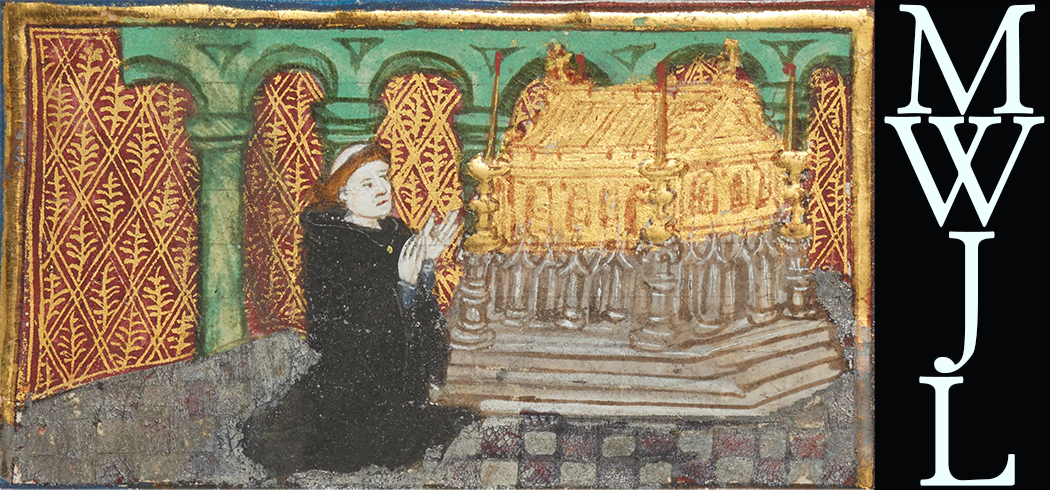 The Testament of John Lydgate:
British Library Additional 34193 Verses
The Testament of John Lydgate:
British Library Additional 34193 Verses
HomeAbout the ArchiveAbout John LydgateWorksManuscriptsAbout this ManuscriptEditorial ApparatusContactVisualization

Folio 224 Verso
Compare Witnesses: •
The prince was slayne the servaunt went at large •
To quite mankynde by obligacion •
Selid with v wondis he paid oure raunson •
Man to restore to paradice his cite •
Þis man not bounde I axe this question •
To blessied Ihesu to bowe his knee •
In paulis pistiłł Ihesu man may Rede •
To pay oure raunson his blode he did shede •
Not a Smale part but ałł he did out blede •
ffor adam appul pulcked from the tree •
Gyf thanke to Ihesu and blow a downe thy knee •
Ałł þis thynges considerd that I tolde •
mane where euer thow holde thi passage •
Towarde Ihesu ałł wey that thow holde •
haue this in mynde and lerne on thynge of me •
That day non ennie shałł do vs no damage •
Whan to Ihesu devoutely bowe oure knee •
Notes
-
When compared with "k" in "bulwarke" at verse eighteen it's apparent that there is no terminal "e" as we might expect. ↩
-
The upper curved ascender of the "h" here is difficult to see from the microfilm facsimile available, but it is visible in the manuscript. It also appears that this "h" is intended to be barred. ↩
-
there is a curved line between the first and second glyphs here that suggests a suspension. ↩
-
The EETS edition and (Harley 218 as its exemplar) has "eyȝe" here, but here it appears to be "the." ↩
-
This appears to be a misreading on the part of the scribe. Based on the hand in other places in the manuscript it looks like it would be k (or possibly l), but here's enough oddness to the lower bow that I cannot be sure. ↩
-
Unlike with other terminal "n" in the work here the scribe does not include the curved mark terminating the glyph. This supports the idea that the curved "n" is intended as a suspended letter with in the terminal position. ↩











